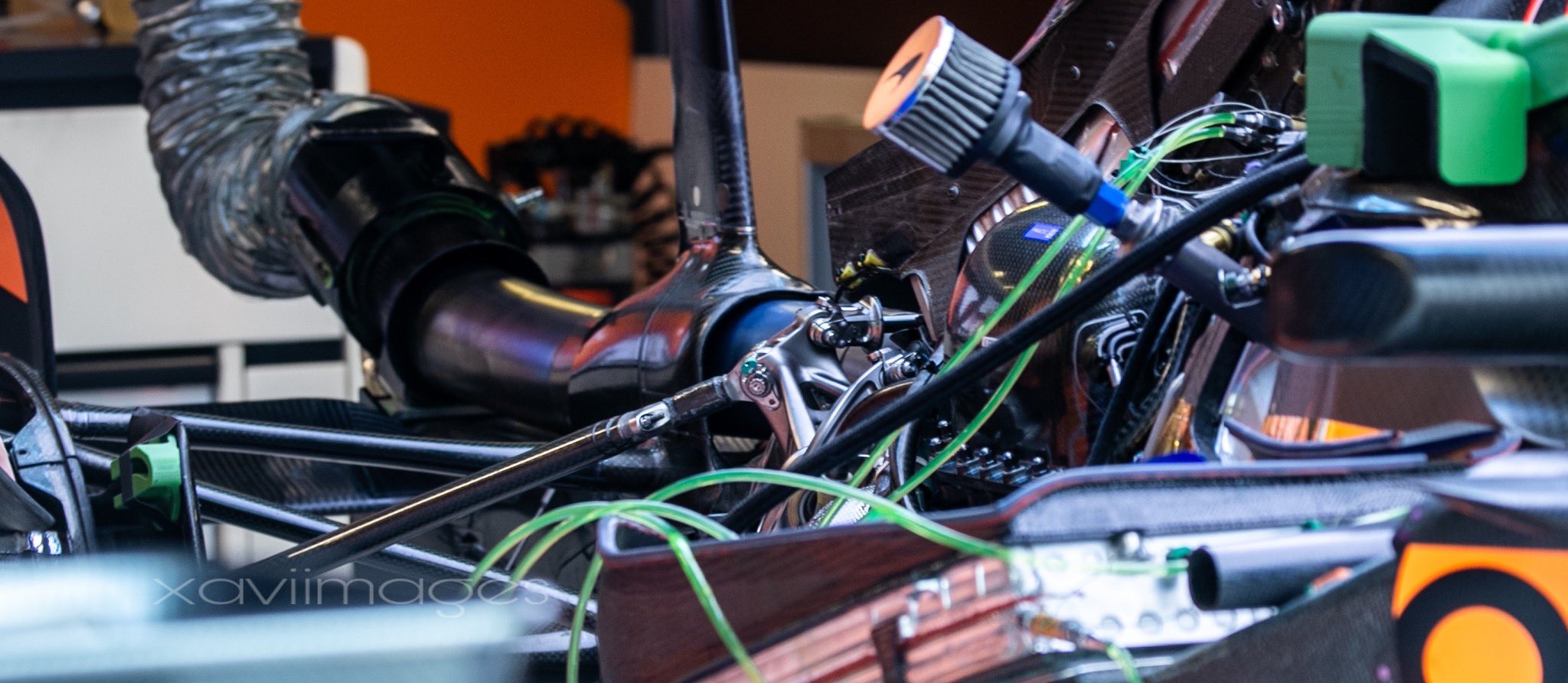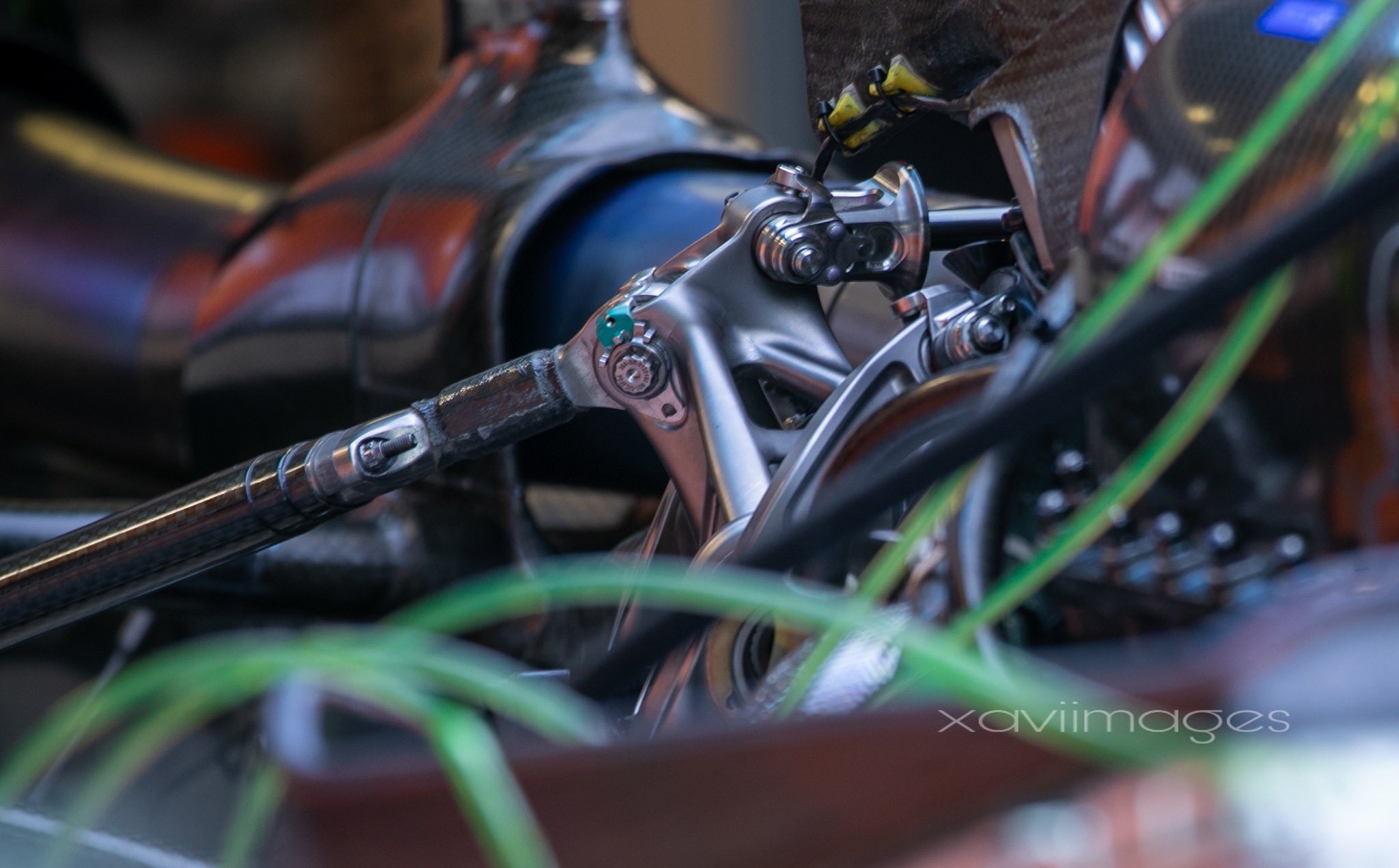https://www.the-race.com/formula-1/gary ... ing-works/
OLD:
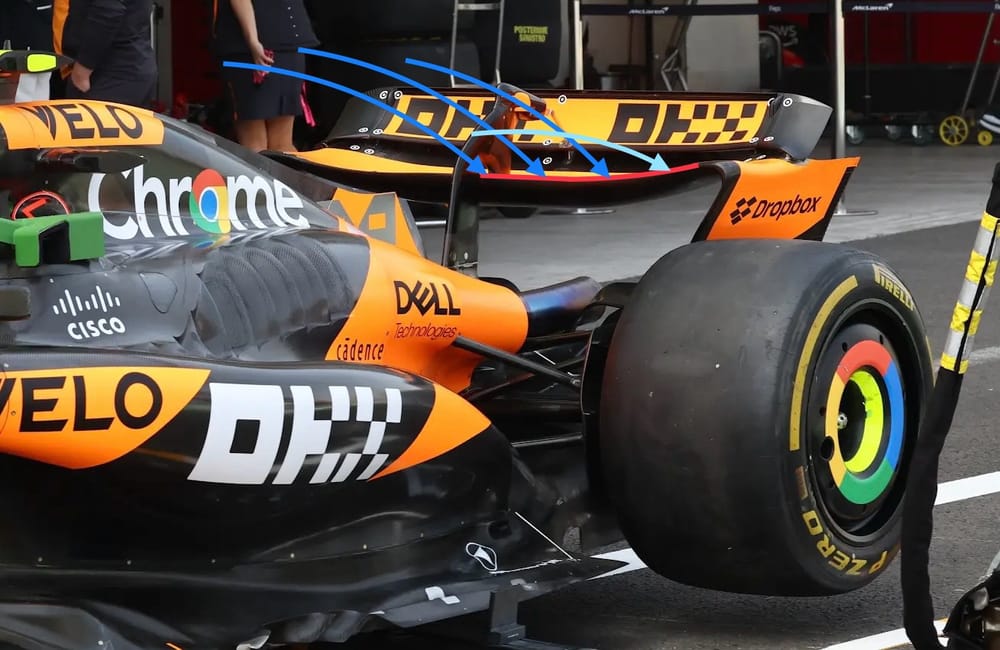
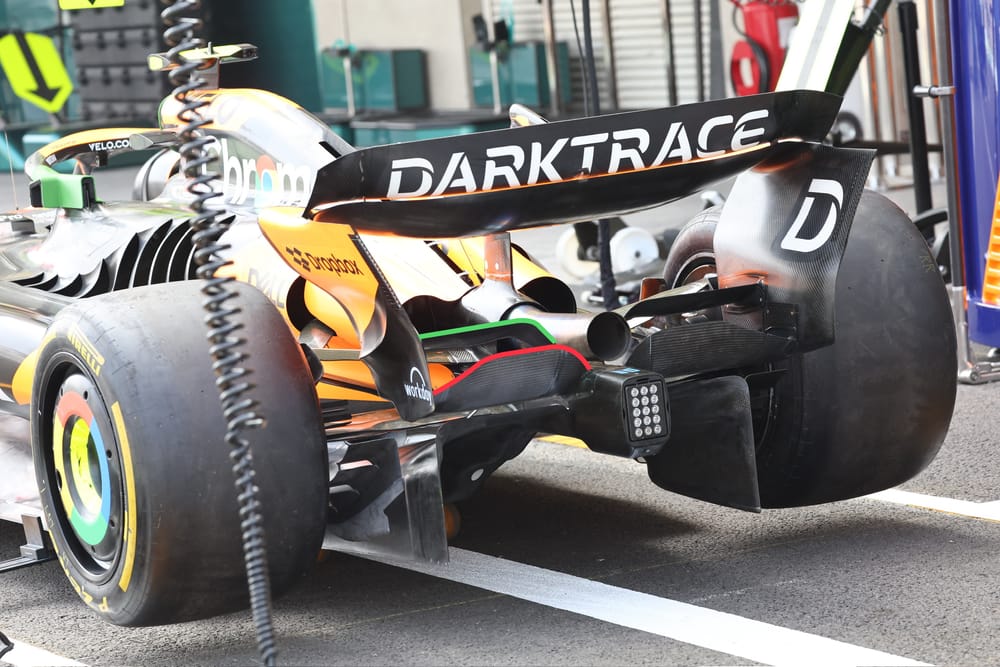 NEW
NEW:
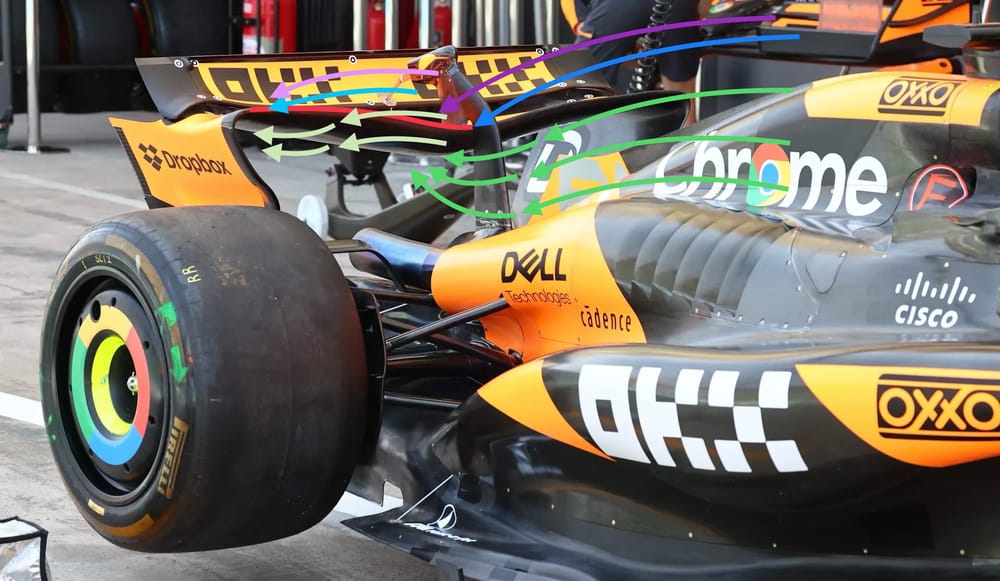
The new rear wing is much more of ‘V’ shape than the previous version. The aerodynamic components downstream can only work with the airflow coming off the components upstream. In the case of the rear wing, it is the blockage created by the airbox and engine cover that is the big upstream influence on the rear wing. That's because of the flow direction highlighted with various arrows inboard and outboard.
The dark blue indicates the separation flow point inboard and the light blue the outboard separation point.
The dark green shows the flow pulled under the rear wing inboard, with the light green showing the flow pulled outboard.
The dark magenta shows the flow passing over the top surface inboard, with the light magenta showing the flow going over the top surface outboard.
Because of this variation in flow direction, the aerodynamic load across this wing span will diminish as we go outboard. This means that when the DRS is available and the rear flap opens, the central section of wing will stall earlier. It will therefore have more of an effect on the diffuser, which is more central on the car.
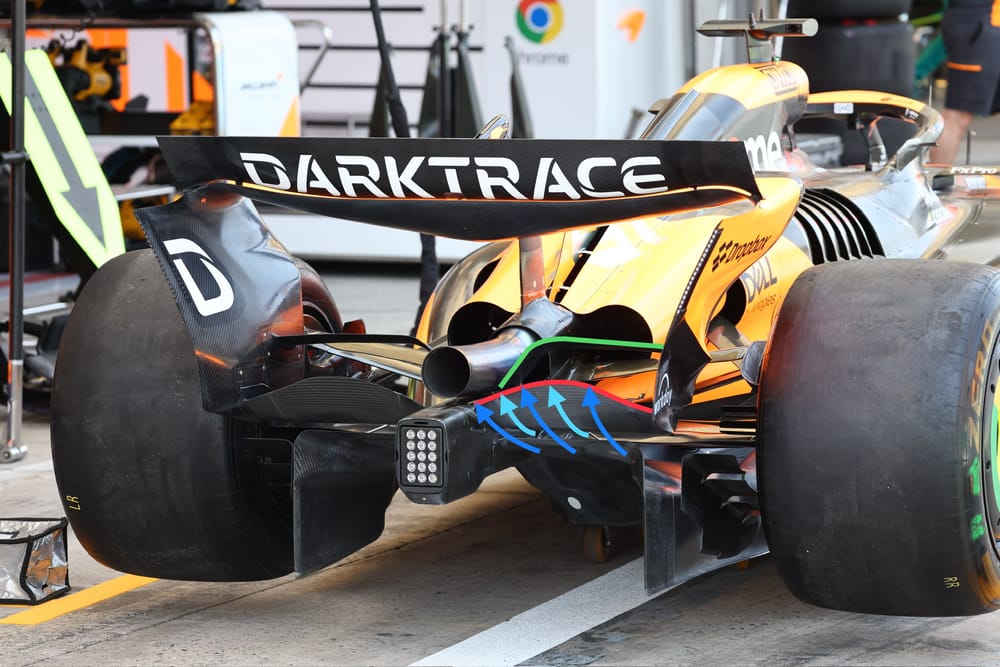
The new beam wing development is more in line with optimizing the airflow between the upper wing and the diffuser. The upper element highlighted with the green line on the trailing edge in the image below is used to help the upper wing and the diffuser 'talk' to each other. If you can achieve this, the drag reduction when the DRS is in use will be greater. It creates a ‘triple' DRS effect, stalling to some degree the upper wing, the beam wing main plane and the diffuser.
The mainplane of the beam wing with its trailing edge highlighted with the red line is more or less a continuation of the diffuser surface. The flow through the slot gap highlighted with the light blue arrows helps extract the flow from the diffuser. which is highlighted with the dark blue arrows.
The new beam wing mainplane trailing edge is just that little bit less uniform. As with the upper wing development, this will give an earlier and probably more progressive drag reduction. More importantly, it should give an earlier and more progressive flow reattachment when the DRS is shut.
This new assembly would give as much downforce as the earlier package, if not more, and reduce the drag by more when the DRS is in use. If so, that equates to more downforce, which has a positive to reduce tyre degradation and more top speed, which is a positive if you have to overtake someone, which now seems to be only possible on the straight. Try in a corner and you end up getting pushed off the track...





